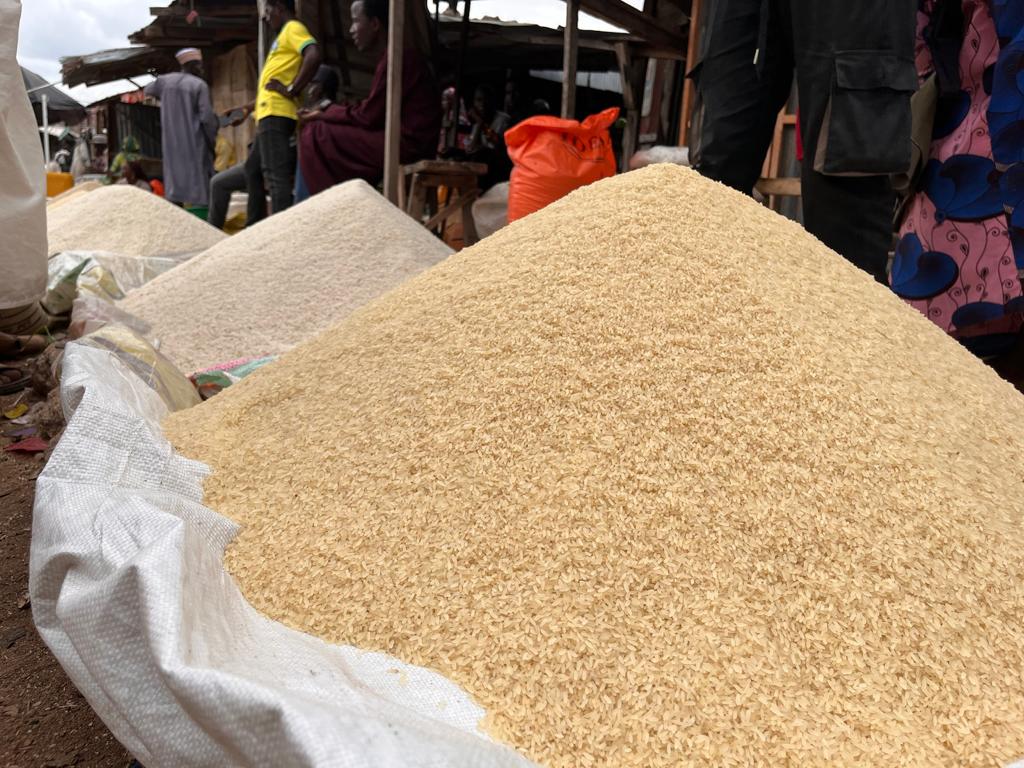BY OLUWADARA ALEGBELEYE
Nigeria’s indigenous rice varieties, including Ofada, Igbemo, Abakaliki, and Ekpoma rice, possess unique characteristics that make them valuable beyond local markets. While these varieties are appreciated for their rich aroma, distinct taste, and nutritional profile, their potential remains largely untapped in the global grain trade.
With the increasing demand for indigenous and nutrient-dense grains worldwide, Nigeria has a significant opportunity to position its local rice as a premium product in international markets. Achieving this, however, requires overcoming multiple barriers and implementing strategic interventions.
Rising global demand for indigenous and speciality grains
Advertisement
Globally, there is a growing appetite for indigenous grains such as quinoa, fonio, millet, and teff, driven by health-conscious consumption trends and a demand for nutritious alternatives to highly processed grains. Speciality rice varieties, such as Thailand’s Jasmine rice and India’s Basmati rice, have successfully established international recognition due to well-structured branding, quality control, and export-focused policies. Nigerian rice could be similarly successful if it is positioned strategically to meet global consumer expectations.
Challenges limiting the export potential of Nigeria’s local rice
Cultivation challenges: a fundamental barrier to market development and growth
Advertisement
Although Nigeria is historically a major rice producer, cultivation remains suboptimal due to several challenges. One major issue is the diversion of land for alternative purposes. In areas traditionally known for rice cultivation, such as Ofada, farmland has been increasingly converted to housing estates and other urban development projects, significantly reducing the available land for rice farming. Without strategic land-use policies, the long-term sustainability of rice farming in Nigeria remains at risk.
Smallholder farmers, who produce most of Nigeria’s local rice, struggle with challenges such as limited access to high-quality agricultural input, as well as irrigation and modern farming techniques. Unpredictable weather patterns, pest infestation, and inadequate mechanisation also contribute to inconsistent yields. Additionally, poor infrastructure, limited access to credit, and fluctuating government policies create an uncertain environment for rice farmers. To strengthen Nigeria’s rice sector before aiming for export expansion, it is critical to address these foundational issues.
Infrastructure gaps and quality standardisation challenges
Local rice varieties are often associated with inconsistent quality, varying grain sizes, and impurities such as stones. This reduces their competitiveness in international markets where stringent food safety and quality regulations apply. Compromised quality, but also significant post-harvest losses are exacerbated by poor storage facilities, outdated milling technologies, and inefficient supply chains, all of which further restrict export potential. To compete globally, local rice varieties should satisfy international safety thresholds such as pesticide residue limits, heavy metal contamination thresholds, and packaging regulations. Many Nigerian rice producers however struggle to meet these requirements due to weak regulatory enforcement and a lack of support for certification. To enhance the quality, marketability, and export potential of local rice varieties, it is essential to address these issues.
Advertisement
Strategies to unlock export potential for local rice
To successfully access and thrive in the global market, Nigeria must adopt a multi-pronged strategy that includes quality improvements, branding, strategic partnerships, and policy support.
1. Enhance quality standards and certification
Relevant stakeholders should:
Advertisement
∙ Invest in modern de-stoning and polishing technologies to meet international quality benchmarks.
∙ Establish standardised grading systems for different Nigerian rice varieties.
Advertisement
∙ Facilitate certification programs (e.g., ISO, HACCP, and organic certifications) to enhance credibility and acceptability in premium markets such as the EU and North America.
∙ Develop traceability systems that allow consumers to verify the source and production methods of the rice they purchase.
Advertisement
2. Strengthen branding and market positioning
Relevant stakeholders should:
Advertisement
∙ Promote Nigerian local rice through strategies such as emphasising unique attributes like aroma, texture, and health benefits.
∙ Implement strategic marketing campaigns that target health-conscious consumers, and position Nigerian rice as a whole-grain alternative to polished rice.
∙ Leverage the Nigerian diaspora as ambassadors for local rice varieties, to encourage demand in international African food markets.
3. Build strategic export partnerships
Relevant stakeholders should:
∙ Collaborate with established international distributors, supermarkets, and speciality food stores to introduce Nigerian rice to high-value markets.
∙ Engage in trade fairs and food exhibitions to showcase Nigerian rice varieties to global buyers.
∙ Partner with e-commerce platforms specialising in ethnic foods to reach wider audiences.
4. Develop supportive trade policies and incentives
The Nigerian government should:
∙ Establish dedicated export incentives for local rice producers, such as subsidies for quality enhancement and export logistics.
∙ Strengthen trade agreements with key rice-importing countries to ease entry into their markets.
∙ Provide financial support and training programs for smallholder farmers and processors to improve competitiveness.
Case studies: lessons from other countries
-
India’s Basmati rice success story: India strategically marketed Basmati rice as a premium product by obtaining a Geographical Indication (GI) tag and investing heavily in quality control. Nigerian rice could benefit from a similar GI designation to protect and promote its identity.
-
Thailand’s rice export model: Thailand became a major rice exporter by implementing strict quality control measures, government-backed export initiatives, and aggressive global marketing campaigns. Nigeria can adopt such strategies to boost the credibility of its rice in international markets.
Conclusion: a roadmap to global expansion
Nigeria’s indigenous rice varieties have great potential to compete in the global market, but a structured approach is required to drive success. A strategic focus on quality improvements, branding, creating relevant market linkages, and policy support, can transform Nigeria’s local rice sector into a major export industry. With the right investments and strategic execution, Nigerian rice can gain a strategic standing alongside the world’s most recognised specialty grains, in a way that drives economic growth and contributes to preserving the country’s rich agricultural heritage.
Oluwadara Alegbeleye is a microbiologist and science communicator. She holds a Ph.D. in Food Science from the University of Campinas, São Paulo. Her research focuses on food safety, microbial risk assessment, and sustainable food systems. Her work has been featured in numerous newspapers, and she contributes to global discussions on agriculture, climate resilience, and food security.
Oluwadara Alegbeleye can be contacted via [email protected]
Views expressed by contributors are strictly personal and not of TheCable.
Add a comment









